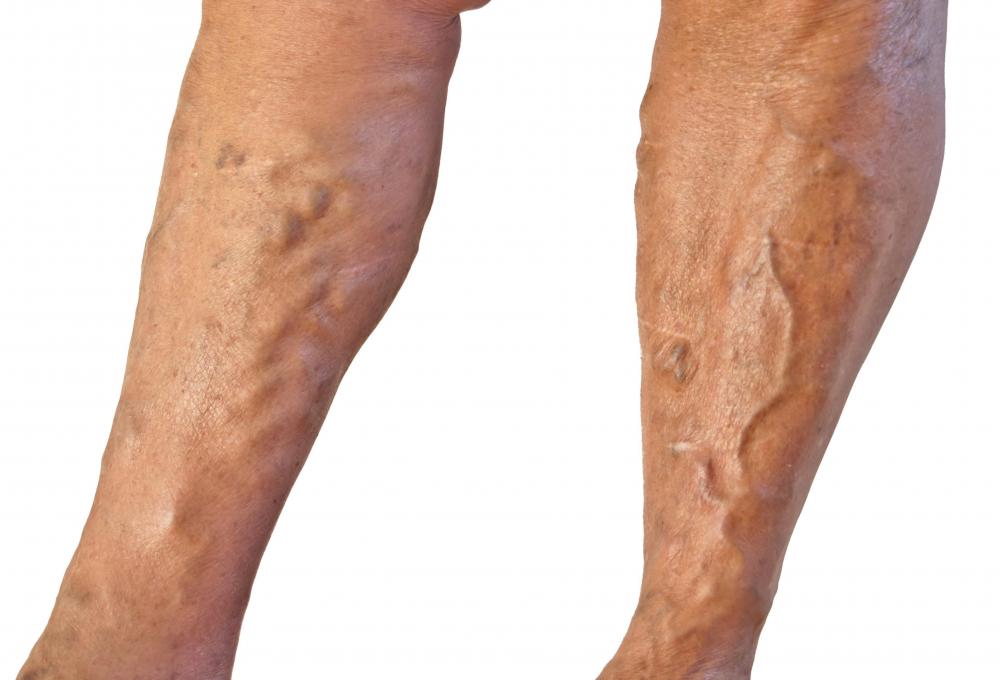At WiseGEEK, we're committed to delivering accurate, trustworthy information. Our expert-authored content is rigorously fact-checked and sourced from credible authorities. Discover how we uphold the highest standards in providing you with reliable knowledge.
What Is a Telangiectasia?
A telangiectasia is a blood vessel, such as a small vein, capillary or arteriole, most often located in the outer layer of the skin or a mucous membrane, that has become dilated and has been left permanently enlarged. The effect of this permanent dilation is to cause a reddish discoloration in the surrounding skin because of the small lesions that develop and make a telangiectasia easy to see. On the skin, telangiectasias, also called vascular ectasias, will look like very small lines that range in color from red through purple and blue. Typically, a telangiectasia measures somewhere between 0.04-0.12 inches (1-3 mm) in width but usually is somewhat longer than it is wide.
Although telangiectasias can be found anywhere in or on the body, they are commonly seen on the face and legs. They are most often found around the chin, nose or cheeks of the face and on the surface of the thighs, ankles and just below the knees. When these appear on the legs, they are sometimes referred to as spider veins.

These lesions are frequently found in healthy people, don’t normally cause symptoms and, ordinarily, are harmless. Some of the common causes of a telangiectasia appearing on normal skin are aging, damage from the sun and alcohol use. In most cases, though, according to medical researchers, the cause remains unknown and they simply seem to appear on their own.

Although, on the whole, most telangiectasias either appear spontaneously or are caused by essentially routine damage to the skin, they might also develop as a result of an underlying condition. They also might accompany a number of diseases or follow long-term use of oral contraceptives or topical applications of corticosteroids. Telangiectasias are seen in birthmarks such as port-wine stains, in scleroderma, in lupus and in acne rosacea, among other disorders. In addition, a telangiectasia might result from an inherited condition, such as ataxia-telangiectasia, hereditary hemorrhagic telangiectasia or others.
An individual who notices telangiectasias on his or her skin might consider seeing a doctor to rule out the presence of an underlying or inherited condition. If telangiectasias detract from personal appearance, there are treatments available that usually are done in a dermatologist’s office. A doctor might treat telangiectasias by using a pulsed dye laser, electrosurgery or sclerotherapy, among other options available. They also can simply be covered up by using makeup.
AS FEATURED ON:
AS FEATURED ON:












Discuss this Article
Post your comments